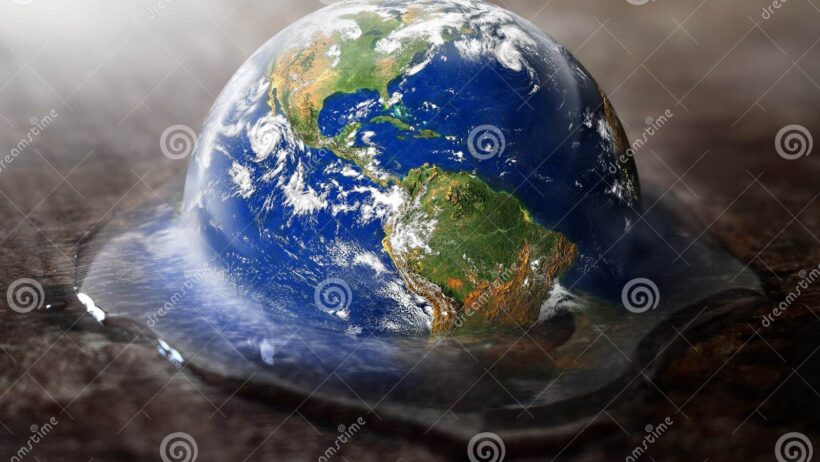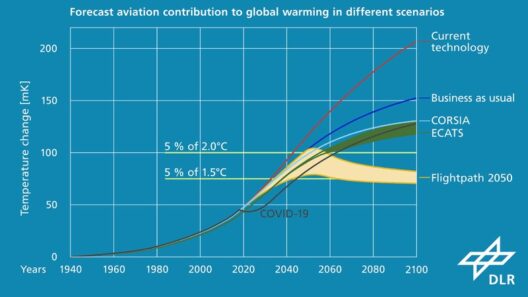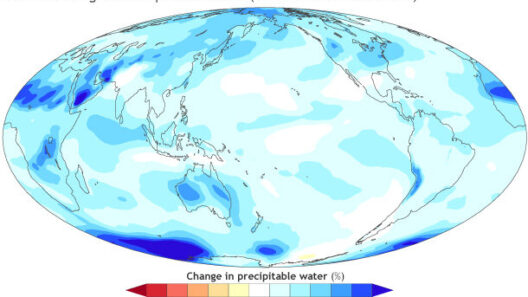The phenomenon of global warming is not merely an abstract concept; it is a pressing reality that affects the very fabric of life on Earth. The science underlying this process is a complex interplay of natural and anthropogenic factors that, collectively, contribute to the gradual increase in the planet’s average temperature. Understanding the intricacies of this process is essential for fostering awareness and driving meaningful action.
At the heart of global warming lies the greenhouse effect, a natural process that warms the Earth’s surface. Solar radiation strikes the planet, and while some of this energy is absorbed, a significant portion is reflected back into space. Greenhouse gases (GHGs) such as carbon dioxide (CO2), methane (CH4), and nitrous oxide (N2O) play a crucial role in this dynamic. They trap heat in the atmosphere, preventing it from escaping, and thus maintaining the Earth’s temperature at a level conducive to life. Without this phenomenon, our planet would be inhospitably cold, averaging around -18 degrees Celsius (0 degrees Fahrenheit) rather than the current average of approximately 15 degrees Celsius (59 degrees Fahrenheit).
However, human activities have drastically altered this delicate balance. The burning of fossil fuels—oil, coal, and natural gas—has led to unprecedented levels of CO2 in the atmosphere. Industrial operations, transportation, and energy production are notable contributors to this surge. Deforestation also plays a significant role, as trees that would otherwise sequester carbon are removed, releasing stored CO2. As a result, we are witnessing an acceleration of the natural greenhouse effect, leading to the rapid warming of our planet.
One cannot overlook the implications of this warming on the global climate system. As the Earth heats up, we observe a host of cascading effects. The most apparent impact is the increase in average global temperatures, which has significant ramifications for weather patterns. More erratic and extreme weather events, such as hurricanes, droughts, and heatwaves, are becoming commonplace. These phenomena do not merely reflect changes but represent the profound disruptions induced by a warmer climate.
Moreover, the melting of polar ice caps and glaciers is a striking illustration of global warming’s repercussions. The Arctic is warming at approximately twice the rate of the overall planet, leading to accelerated ice melt. This reduction in ice not only contributes to rising sea levels but also has profound ecological ramifications. Species that depend on ice-covered regions for hunting and breeding face existential threats, while altered habitats create challenges for myriad other organisms.
Sea-level rise is one of the most tangible outcomes of a warming world. As glaciers and ice sheets continue to disintegrate, water from these sources contributes to the oceans’ volume. Coastal communities and ecosystems are particularly vulnerable, facing increased flooding and erosion. The potential displacement of millions of people adds a layer of urgency to the need for climate action. The socio-economic strains resulting from such climate refugees are likely to exacerbate existing inequalities and lead to geopolitical unrest.
In concert with these trends, the phenomenon of ocean acidification is a less frequently discussed but equally important consequence of global warming. As CO2 levels rise in the atmosphere, a proportion of it is absorbed by the oceans, leading to increased acidity. This change in the oceans’ chemistry has dire consequences for marine life, particularly organisms such as corals and shellfish that depend on stable conditions to build their calcium carbonate structures. The degradation of coral reefs, often referred to as the rainforests of the sea, threatens not only biodiversity but also the livelihoods of communities that rely on these ecosystems for sustenance and income.
Furthermore, the biological impacts of global warming extend beyond just physical changes. The delicate interrelationships within ecosystems are affected as species struggle to adapt to shifting habitats and climates. Phenological mismatches, where the timing of biological events (such as flowering or breeding) does not coincide with optimal conditions due to changing temperatures, can upend food webs and disrupt natural processes.
Public understanding of global warming is often clouded by misinformation and misconceptions. The debate surrounding climate change has led to a polarized perception of its validity and urgency. It is vital to recognize that the scientific consensus supports the reality of human-induced warming and its potential consequences. Skepticism can stem from an array of factors—economic interests, political affiliations, and cultural beliefs—but these should not overshadow the fundamental scientific evidence at hand.
Addressing climate change necessitates a multifaceted approach that encompasses technological innovation, policy reform, and societal shifts in behavior. Renewable energy sources, such as wind, solar, and hydroelectric power, present a formidable avenue for reducing greenhouse gas emissions. Transitioning to a low-carbon economy is not only imperative for mitigating warming but also offers immense opportunities for economic growth through green job creation.
In addition to technological advancements, the role of individual and collective action cannot be overstated. Grassroots movements and community engagements are instrumental in fostering a culture of sustainability. From reducing waste and conserving energy to advocating for policy changes at local and national levels, every individual can contribute to the global effort against climate change.
In conclusion, the global warming process is a complex and multifarious challenge that requires immediate attention and sustained effort. The impacts are profound, far-reaching, and, in many cases, irreversible. Understanding the science, recognizing our role, and advocating for collective action are the bedrocks upon which effective climate strategies must be built. Our planet’s future hinges on our ability to acknowledge the urgency of this issue and respond with the resolve necessary to safeguard it for future generations.








